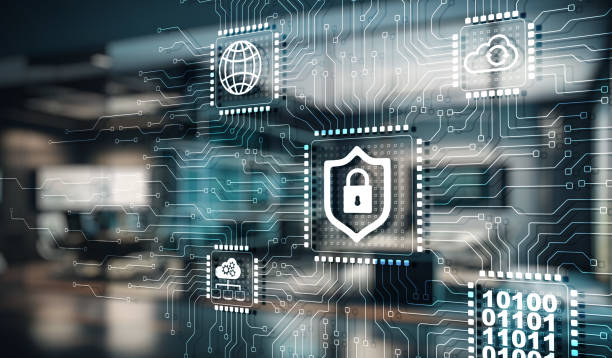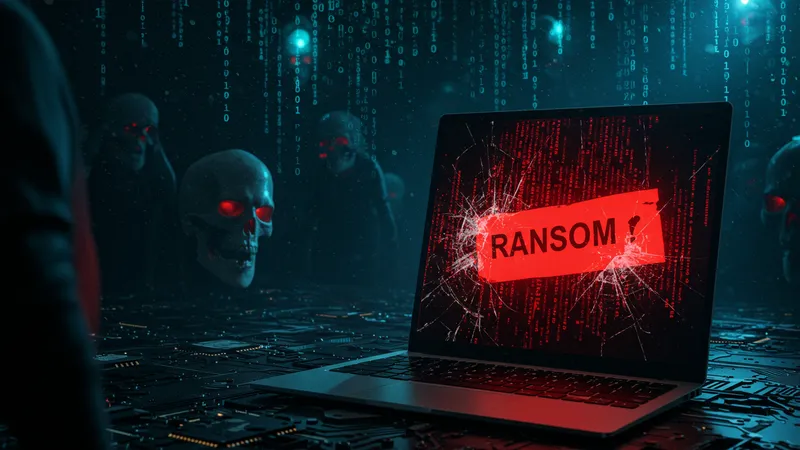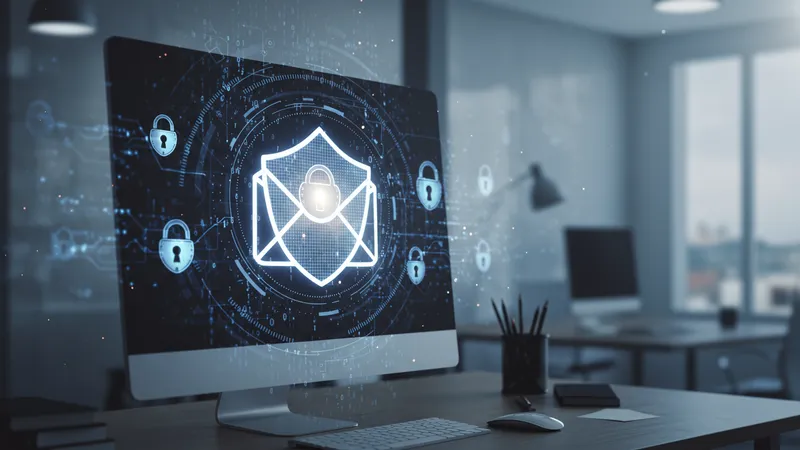


You won't believe the security loopholes lurking in your system, waiting to be exploited by cybercriminals. But there's a secret arsenal of tools that even top security gurus swear by!
Why has cybersecurity become the hottest topic today? As attacks become more sophisticated, protecting sensitive data is crucial. Don’t be the next victim—discover how to fortify your defenses right now.

Did you know that 60% of small businesses go out of business within six months following a cyberattack? But the real shocker is, most of these could have been prevented with a few simple measures. The world of cybersecurity is filled with unexpected twists and secrets…
The sheer number of daily cyber threats is mind-boggling, reaching over 2,200 attacks per day. That’s one every 39 seconds! You might think you’re safe, but high-profile companies fall into these traps too. But that's not even the wildest part...
What happens next shocked even the experts. Stay with us to uncover how you can build a cybersecurity framework robust enough to withstand today's relentless threats. Dive deeper as each page reveals strategies unknown to many!
Network vulnerabilities are like open doors for cybercriminals. Shockingly, many companies have no idea how exposed they are until it's too late. A single overlooked weakness can lead to catastrophic failures. What you'll discover next is eye-opening...

In a recent study, it was found that over 80% of breaches involve brute force or the use of lost or stolen credentials. Yet, basic protocols like two-factor authentication remain underutilized. This might seem like a small detail, but it has huge implications.
Most cybersecurity breaches are preventable, but complacency and outdated measures leave even tech giants vulnerable. Even the largest security firms sometimes overlook critical elements. But there's one more twist you need to know...
You might think your firewall is enough, but advanced threats often bypass traditional defenses. It’s crucial to layer your security measures for reinforced protection. What you read next might change how you view your entire system forever.
In the fast-moving digital world, real-time threat detection is more than just a buzzword—it's a necessity. Surprisingly, many systems still operate on reactive measures. Learn why proactive detection can mean the difference between safety and disaster.

Studies show that identifying threats in real time can reduce exposure time by more than 90%. This key difference allows organizations to halt attacks before they escalate. Yet, not all companies are taking this seriously.
Real-time threat detection uses advanced analytics and machine learning to identify unusual patterns. This technology can predict and preempt potential threats, giving businesses a critical edge. But the benefits don’t stop there...
Incorporating this into your security strategy requires investment and commitment but yields unmatched peace of mind. Stay tuned to discover the tools that make this possible and transform your company's security posture.
Ransomware is a chillingly efficient crime, locking you out of your data until a ransom is paid. Astonishingly, the average demand has risen to $178,000. Even scarier is how easily these attacks can infiltrate unprepared networks.

Once inside, ransomware spreads quickly, seizing control before detection. Some of the largest incidents began with nothing more than a phishing email. Imagine losing years of data in a heartbeat. It's a gambler's game nobody wants to play.
Ransomware threats are now more targeted and sophisticated, preying on industries with critical data needs. Deployment is often automated, making defenses all the more crucial. Can you guess what the number one gateway is?
Email remains the primary vector for these attacks, with users often unknowingly aiding the delivery. But don’t worry—you'll learn how to protect your digital assets as we reveal more advanced strategies in the following sections.
The vulnerability of email systems is a well-known access point for cyber threats. With over 92% of malware delivered via email, fortifying this entry is critical. Loss from security gaps in email can be staggering.

Advanced email security solutions do not just block spam—they analyze the origin of emails, verify trust levels, and employ encryption. These tools are crucial in discerning legitimate from malicious communications.
Despite their importance, many businesses still rely on outdated email filters. What if you could reduce email threats effectively without compromising communication? Imagine a world where spam and phishing attempts are a thing of the past.
Enhancing your email defenses goes beyond simple measures. With the right blend of technologies and protocols, you can significantly reduce the risk of cyber incursion. Uncover the next layer of must-have strategies that could save you time and resources.
Cloud computing offers flexibility, but it also introduces a host of new security challenges. Shockingly, misconfigured cloud settings account for 93% of issues. This oversight can lead to significant breaches.

Data in the cloud must be handled with utmost care. Secure access controls, encryption methods, and regular audits are essential in safeguarding your information. Yet, many organizations fail due to insufficient policies.
While cloud providers bolster their infrastructures with robust security, responsibility for data confidentiality rests with users. Understanding your shared role in cloud security is pivotal. But what about the unseen risks?
Threats often go unnoticed until they escalate. By implementing stringent security measures and adhering to best practices, you can effectively preempt cloud vulnerabilities. Stay with us as we delve deeper into these advanced strategies.
Internet of Things (IoT) devices make life easier but open doors to potential security threats. Alarming reports indicate that an IoT device is hacked every two minutes. What's the cost of convenience if security is compromised?

Many IoT devices lack robust security, often using default passwords and unencrypted communication. This makes them perfect targets. Consider the potential chaos if an intruder controlled your smart home or office.
Your network's weakest link could be an unattended IoT device. Yet, simple steps can improve protection significantly. Are we sacrificing security for convenience? Let’s take a closer look at how to safeguard these vulnerable points.
Reducing the risk involves better practices—strong passwords, secured network settings, and regular updates. The next pages will share powerful insights on taking control of digital threats, transforming your approach to IoT security.
People are often the weakest link in any security chain. Instituting a cybersecurity training program can drastically reduce incidences of breaches. You won't believe how many attacks stem from simple human error.

Training not only educates but empowers employees to recognize and respond to threats. This proactive measure is a game-changer in minimizing human-related vulnerabilities. What's the secret to an effective training regimen?
Instilling a culture of security mindfulness leads to a stronger, more aware workforce. By regularly updating training materials and incorporating real-world simulations, employees become adept at identifying intricate attacks.
With effective training in place, mistakes decrease and response times improve. This is not just a safety measure—it’s a strategic advantage. Read on to unveil additional secrets to crafting a resilient cybersecurity culture within your organization.
No matter how robust your defenses, incidents can occur unexpectedly. An effective incident response plan ensures swift recovery and minimal damage. The stark reality is, many companies don't have a documented plan at all.

Without a well-structured plan, chaos ensues during an attack. Quick and efficient responses can prevent small breaches from becoming catastrophic. So, what constitutes a top-notch response strategy?
Incident response planning involves preparing, detecting, containing, and recovering from cyber incidents. Frequent drills and updates are essential to maintaining readiness. Are you confident in your team’s response capabilities?
Your plan should detail roles, responsibilities, and communication paths during an incident. This personalization mitigates damage and optimally allocates resources. Discover the guidelines that set industry leaders apart in handling cyber crises.
The fallout of a data breach can be tremendous—financially and reputationally. Beyond immediate cleanup, businesses face long-term consequences. It's a reality fewer companies are prepared for until it's too late.

What most businesses don't anticipate are indirect costs—legal fees, compliance penalties, and brand damage. Did you know it might take years to fully recover from a single breach?
Preparing for potential breach expenses is part of strategic planning. Understanding insurance coverage and cost-mitigation strategies can drastically reduce impact. But how can you turn this potential downfall into a fortification opportunity?
Preemptive measures and strategic financial planning can provide buffers against significant losses. In the next section, explore how farsighted organizations turn breaches into frameworks for future resilience.
AI and machine learning aren't future technologies—they’re essential components of modern cybersecurity. These tools transform threat detection by analyzing tons of data rapidly. Paradoxically, they also pose new challenges.

The beauty of AI lies in its ability to evolve—anticipating and preventing new threat patterns. Yet, these same technologies are used by cybercriminals to enhance their attack strategies, pushing the cyber defense game into new territories.
Leveraging AI for cybersecurity means deploying predictive insights and adaptive algorithms. The potential for reducing human error and response time is immense. But have we considered the implications of over-relying on these smart systems?
Despite its benefits, reliance on AI requires ethical consideration and skilled oversight. Join us as we dive into the advantages and potential pitfalls of integrating AI into your security strategies.
The digital landscape is ever-changing, and building a strong cybersecurity framework is an ongoing endeavor. Whether it's safeguarding networks, training employees, or forecasting threats with AI, proactive steps pave the pathway to security.
As you consider these strategies, remember that the learning never stops. Keep informed, remain vigilant, and empower your organization to move securely into the future. Share this knowledge, bookmark this article, and make cybersecurity a priority today!